The Pier Pavilion Theatre site on Llandudno's North Shore must surely take the prize for being the town's longest running eyesore. Derelict site of former Pier Pavilion Theatre - 2008
Derelict site of former Pier Pavilion Theatre - 2008Of course, it didn't always look like this. From 1886 - 1994 it was the site of the Pier Pavilion theatre, a 2,000 seat three-storey structure, built in the typically flamboyant Victorian style, complete with a superbly detailed cast-iron veranda, running the length of the entire seaward side of the building.
The Directors of the Llandudno Pier Company had successfully opened the new pier in 1878 and were now looking to expand their business to take advantage of Llandudno's growing popularity as a seaside resort. The existing sundeck pavilion at the end of the pier was proving inadequate to cope with the demand for musical recitals, so the decision was taken to build a bigger and better pavilion near the promenade entrance to the pier extension then under construction.
 The original Pavilion the day after its original roof was destroyed by a storm
The original Pavilion the day after its original roof was destroyed by a storm
Work started in 1881. The new pavilion was scheduled to open in the Spring of 1883 but a ferocious storm on the night of January 25th 1883 resulted in severe damage to the glass roof. Following a rethink of the roof's design (and much embarrassment to the building's architects, who were promptly dismissed by the pier company), the decision was taken to replace the original glass roof with a sturdy lead one, more suited to the demands of a North Wales location in winter. Extensive rebuilding work was required and the building did not open officially until September 1886.
The pavilion was unusual in that in had two main entrances, the first from the pier entering at Stall level and the another on Happy Valley Road, which emerged onto the Balcony. The building was 204ft long, with a width ranging from 84ft to 104ft. The canopy roof was 60ft across. One end of the building housed the Egyptian Hall, which featured hieroglyphics on its wall decorations. More unusually, the pavilion basement housed what was then the largest indoor swimming pool in Britain. Unfortunately for the pier company, problems with seawater quality (the pool was filled twice daily from the tides) meant that this novel idea did not prove successful and the pool was filled in shortly afterwards.
 Pier Pavilion - Seaward facing facade
Pier Pavilion - Seaward facing facade
 Closer look at the Pavilion's ornate cast-iron exterior veranda
Closer look at the Pavilion's ornate cast-iron exterior veranda Pier Pavilion - Original Interior
Pier Pavilion - Original Interior Under the leadership of Jules Rivière, the Orchestra at the Pavilion was a great success and was quickly trebled in size to symphony proportions. It contributed to the development of that great British summer entertainment, the promenade concert. The young Henry Wood came to Llandudno to observe the then elderly Rivière at work. Following Rivière, the locally renowned Arthur Payne held the baton for many years until 1925 when he was followed in 1926 by Malcolm Sargent for two notable seasons then by others from season to season including, as a guest conductor on several occasions, Sir Adrian Boult. The pier pavilion orchestra continued its summer seasons until 1936 when it gave way to variety shows, a victim of changing entertainment tastes. A small orchestra survived, this was taken over in 1938 by John Morava who maintained the pier's orchestral tradition to the very end in 1974, when the orchestra (by then confined to the pierhead pavilion) was finally disbanded.Thus, in 1936, the pavilion prepared to enter its second era - that of variety entertainment. This was to be the theatre's golden age, with the Pavilion firmly on the tour list of every major artist. It also regularly hosted political rallies and conferences, with all the big names in British politics appearing there at Party Conferences during the 1930s-1960s.
Under the leadership of Jules Rivière, the Orchestra at the Pavilion was a great success and was quickly trebled in size to symphony proportions. It contributed to the development of that great British summer entertainment, the promenade concert. The young Henry Wood came to Llandudno to observe the then elderly Rivière at work. Following Rivière, the locally renowned Arthur Payne held the baton for many years until 1925 when he was followed in 1926 by Malcolm Sargent for two notable seasons then by others from season to season including, as a guest conductor on several occasions, Sir Adrian Boult. The pier pavilion orchestra continued its summer seasons until 1936 when it gave way to variety shows, a victim of changing entertainment tastes. A small orchestra survived, this was taken over in 1938 by John Morava who maintained the pier's orchestral tradition to the very end in 1974, when the orchestra (by then confined to the pierhead pavilion) was finally disbanded.Thus, in 1936, the pavilion prepared to enter its second era - that of variety entertainment. This was to be the theatre's golden age, with the Pavilion firmly on the tour list of every major artist. It also regularly hosted political rallies and conferences, with all the big names in British politics appearing there at Party Conferences during the 1930s-1960s.In the decades following the war, the pavilion was as popular as ever with the thousands of holidaymakers returning to Llandudno year after year. It was not until the end of the 1960s that the popularity of the pavilion's variety shows began to flag - victims of the twin threats of television and cheap foreign holidays.

By the 1970s, the Golden Goose Entertainments building (1969) has been built to the left of the Pavilion Building.
A full programme of summer shows was carried on through the 1970s but the audiences were falling away steadily and the length of the summer season began to shorten. By now, the theatre was under the creative control of local impresario and comedian Alex Munro, who introduced new initiatives to bring back the audiences, including the pavilion's first pantomime in 1972, an event which was marred by the sad death of Munro's daughter Janet Munro, who died in tragic circumstances days before she was due to begin rehearsals for the show. In the late 1970s, local impressarios Robinson Cleaver & Clive Stock took over the management of the Pavilion, promoting shows with stars such as Bobby Crush.
On the 6th December 1983, the Llandudno Pier Company sold the pavilion for £10,000 to Llandudno Pavilion Ltd, a sister company of Uttoxeter Investments Ltd, a leisure company that already operated the Llandudno Cabin Lift. Despite the high quality of the Summer shows, the audiences were still falling and in 1984, it was decided that the theatre would close at the end of the summer season. The final show at the pavilion was 'Startime Follies', a variety show featuring Tommy Trafford, Lynda Lee Lewis, Kay Carman and the Marie Ashton Dancers, with performances at 8pm nightly and a high season only matinee at 3pm daily. Ticket prices ranged from £2 to £2.60. The lack of audiences, increasing costs of maintaining the old building and new fire regulations had finally put paid to the pavilion's theatrical tradition - 98 years after it had first opened.
Sadly, the decline of the Pier Pavilion mirrored the decline of the traditional British seaside resort in the 1960s, 70s and 80s. The final show at the Pavilion was 'Startime Follies' in 1984. The pavilion's days as an entertainment venue were not entirely over, however. A few months before the theatre closed, a new attraction opened in the basement. The huge basement area (originally built as the country's largest indoor swimming pool back in 1886 but which closed shortly afterwards due to problems with water quality) had been home over the years to a small amusement arcade called Tusons and, later, a ghost train ride and vintage car 'round the world' ride. These were all cleared out to make way for the Llandudno Dungeon, a walk through horror waxworks exhibition, featuring scenes from the more gruesome aspects of human history, all built at a cost of over £100,000. Scenes depicted included a full size replica of a Victorian London street, complete with Sweeney Todd's barber shop and opium den, the Great Plague of London, body snatchers at work and a full size model of a guillotine. This novel attraction proved successful for a few years but closed at the end of 1990, when the entire exhibition was sold and shipped to France.
 The Pier Pavilion after closure, about 1988
The Pier Pavilion after closure, about 1988
Lack of maintenance meant that the exterior of the building deteriorated rapidly but the interior remained in surprisingly good condition, with most of the original architectural and theatre features still in situ. January 1992 saw ownership of the building pass to the Worcester based Launchsign Ltd, which announced their intention to completely restore the building and introduce to the former theatre area. This £4million plan, billed as a 'Victorian Wonderland' and devised by L&R Leisure PLC/Lingard Styles, would have seen the Basement area used for a 'Victorian Wonderland' themed attraction, the Ground Floor used for a Covent Garden style indoor market and the First Floor used for a themed restaurant (with outdoor seating on the balcony) and retail/entertainment units.
Despite the grandiose plans, no effort was made to repair or even secure the theatre building, which became increasingly vandalised and a meeting place for local youths. The process of decay accelerated, until the almost inevitable arson attack in 1994 destroyed the main theatre building:
 Pier Pavilion ablaze - February 13th, 1994
Pier Pavilion ablaze - February 13th, 1994 Aftermath - February 14th 1994
Aftermath - February 14th 1994The alarm was raised on February 13th 1994 at 5.30pm and over 80 firemen attended. With the Pavilion already well alight, their priority was to stop the fire spreading into surrounding buildings, especially the Grand Hotel. The blaze was so fierce that cars parked on the road outside exploded and windows in hotels across the road shattered with the heat. The fire was under control by 6.30pm but firemen remained on site until 1am damping down the remains.
The following day, watched by hundreds of curious onlookers (including myself), a demolition team was sent in to demolish the remaining parts of the building, which were in a dangerous state. The Managing Director of Launchsign Limited, Ricky Taylor, said that his company had lost £100,000 as a result of the fire and the building was not properly insured.
And there the story ends...for now. The site has never been cleared properly and remains an eyesore until the present day. Attempts by Conwy County Council to redevelop the site have been constantly rebuffed by the current owner, a Worcester businessman called David Taylor. Rumours abound that the owner is holding on to the property in the hope of getting Planning Permission for some form of residential development - this seems very unlikely to be granted.
Comment: Given that the the Pavilion site has been derelict for the past 15 years, one wonder why Conwy Council have not taken more action to resolve such an eyesore in one of the most prominent sites in Llandudno? I'm sure that a similar eyesore in a seaside resort like Eastbourne would soon be dealt with!












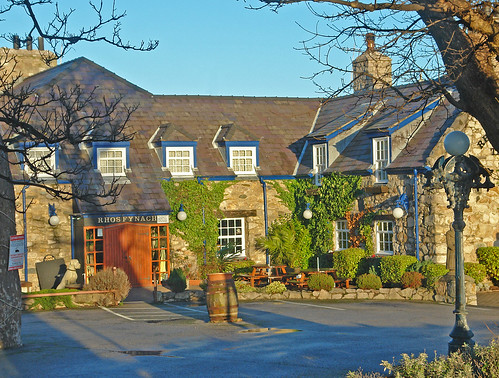



















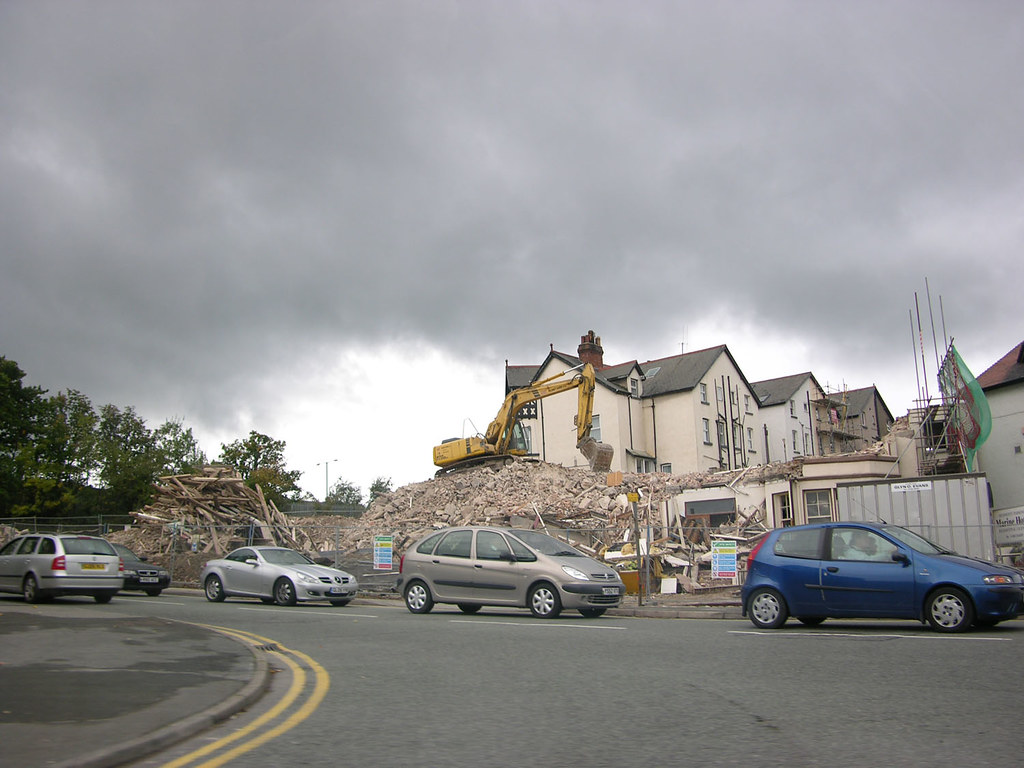

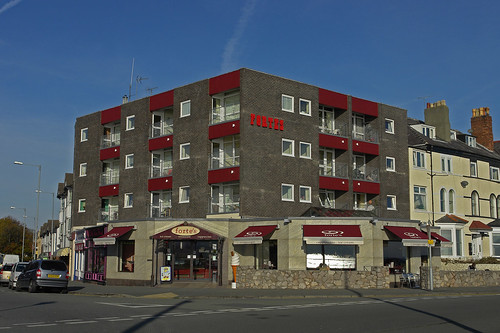
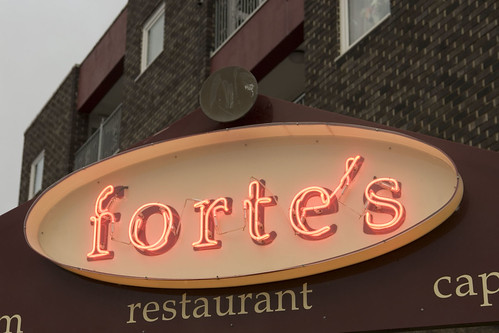









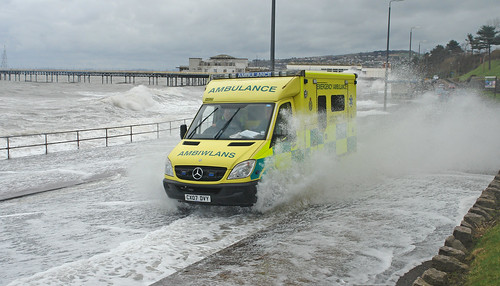

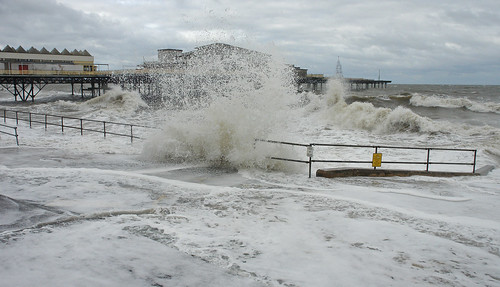

.jpeg)










